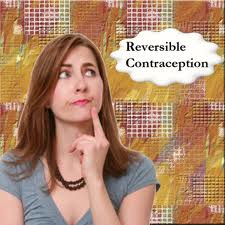 Several health experts are proposing to make the birth control pill available in the U.S. without a prescription (as they are in many parts of the world). The American College of Obstetricians and Gynecologists (ACOG) released a statement calling for oral contraceptives to be sold over-the-counter, no longer requiring a doctor’s prescription.
Several health experts are proposing to make the birth control pill available in the U.S. without a prescription (as they are in many parts of the world). The American College of Obstetricians and Gynecologists (ACOG) released a statement calling for oral contraceptives to be sold over-the-counter, no longer requiring a doctor’s prescription.
ACOG considered a host of issues, including the safety of birth control pills; whether pharmacists should have a screening role (which could raise the moral objection issue) ; adherence to taking the pill; whether women would skip other preventive care if they didn’t visit a health care provider for a prescription; and cost.
ACOG addresses frequent objections to OTC oral contraceptives by concluding that “several studies have shown that women can self-screen for contraindications,” and “cervical cancer screening or sexually transmitted infection (STI) screening is not required for initiating OC use and should not be used as barriers to access.”
ACOG recognizes making the pill non-prescription might increase the cost for women who have health insurance which would only pay for prescribed drugs, and would have to pay out-of-pocket for the over-the-counter version.
The National Latina Institute for Reproductive Health issued this response to that concern: The recommendation that birth control be available over-the-counter supports what we know about Latinas and contraception: over-the-counter access will greatly reduce the systemic barriers, like poverty, immigration status and language, that currently prevent Latinas from regularly accessing birth control and results in higher rates of unintended pregnancy.
Pre-Prescribing Emergency Contraception to Teens
On a similar issue, the American Academy of Pediatrics(APP), issued a statement recognizing high teen birth rates in the United States and barriers to access to emergency contraception for adolescents 17 and younger. The AAP strongly admonishes pediatricians who refuse to discuss or provide contraception to teens based on their own beliefs, stating:
- Pediatricians have a duty to inform their patients about relevant, legally available treatment options to which they object and have a moral obligation to refer patients to other physicians who will provide and educate about those services. Failure to inform/educate about availability and access to emergency-contraception services violates this duty to their adolescent and young adult patients.
- The AAP recommends that physicians provide prescriptions to emergency contraception like Plan B in advance, so teens have it ready if and when the need arises. They also urge physicians to provide accurate information to teens on this topic, and, “At the policy level, pediatricians should advocate for increased nonprescription access to emergency contraception for teenagers regardless of age and for insurance coverage of emergency contraception to reduce cost barriers.”
HHS Urged to Remove Restrictions on Emergency Contraception
Finally, a petition is circulating urging the U.S. Department of Health and Human Services to remove restrictions on emergency contraception and make it available to women of all ages without a prescription.
SOURCE: Our Bodies, Our Selves

 A growing number of U.S. women may be opting for intrauterine devices (IUDs) as their birth control method, a national survey finds. That's good news, researchers say, since IUDs and contraceptive implants are the most effective forms of reversible birth control.
A growing number of U.S. women may be opting for intrauterine devices (IUDs) as their birth control method, a national survey finds. That's good news, researchers say, since IUDs and contraceptive implants are the most effective forms of reversible birth control. Seven out of 10 women in Sub-Saharan Africa, South Central Asia and Southeast Asia who want to avoid pregnancy but are not using modern contraceptives report reasons for nonuse that indicate currently available methods do not satisfy their needs, according to new
Seven out of 10 women in Sub-Saharan Africa, South Central Asia and Southeast Asia who want to avoid pregnancy but are not using modern contraceptives report reasons for nonuse that indicate currently available methods do not satisfy their needs, according to new